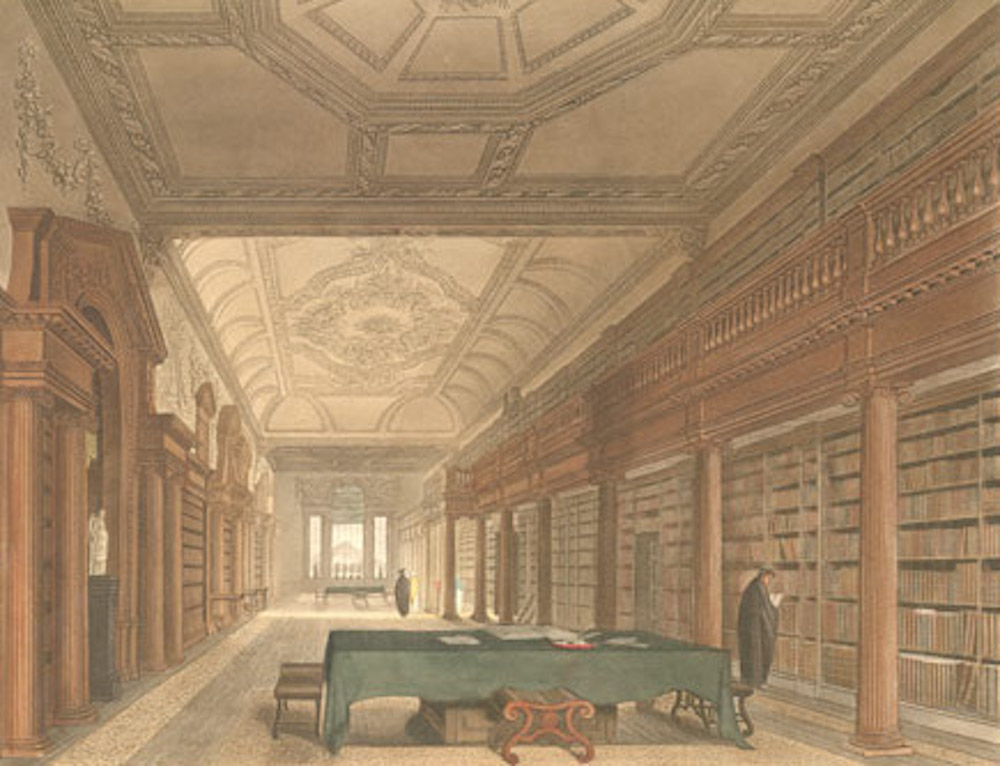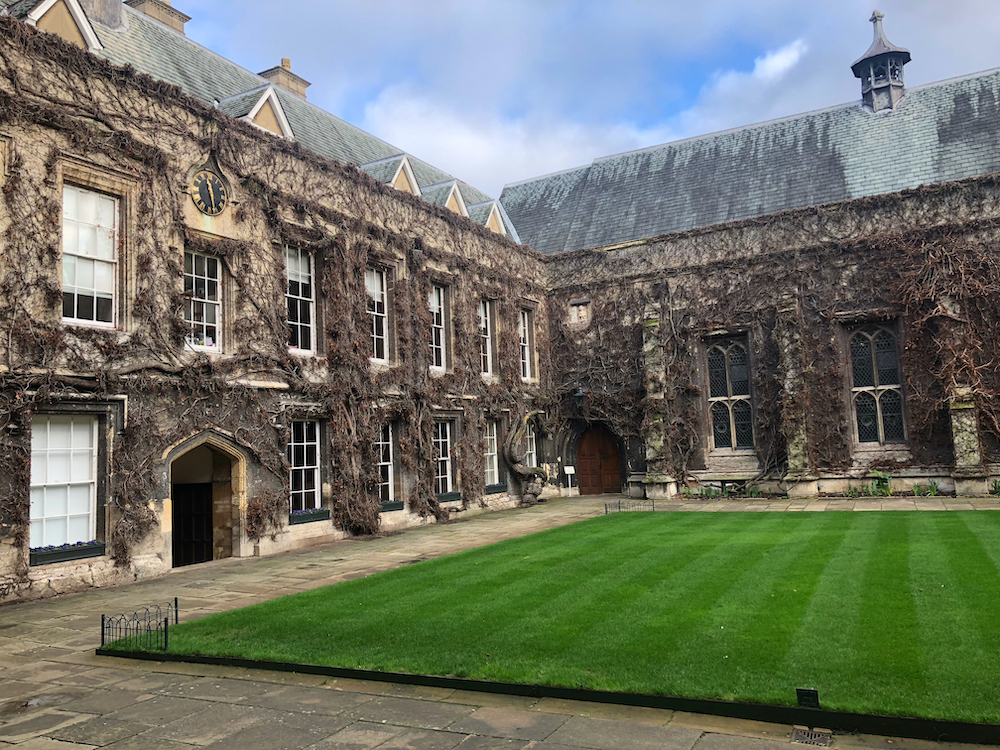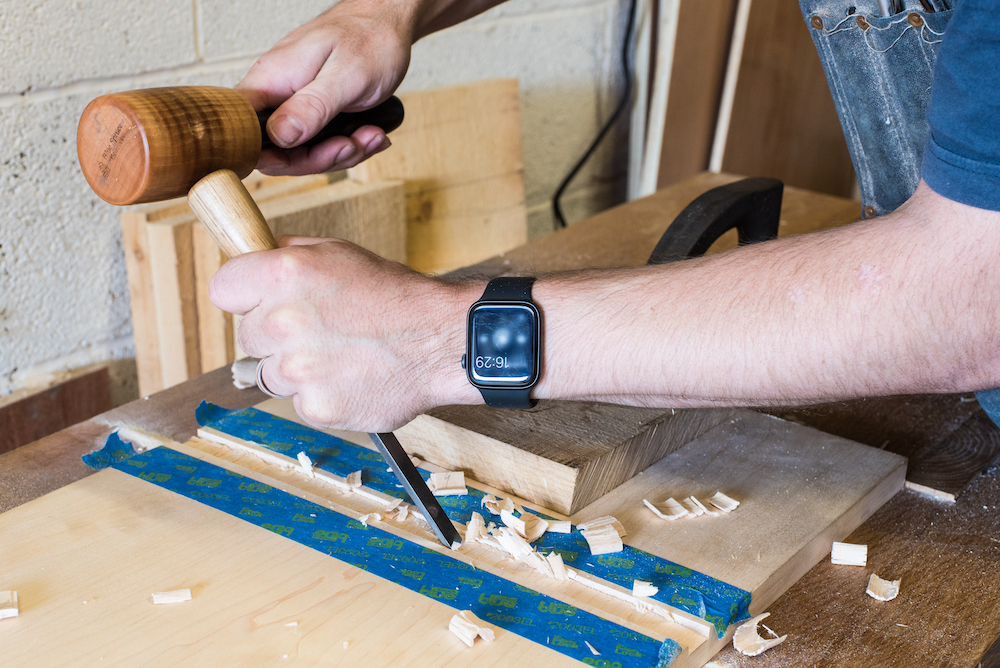And with that, the bookcase is assembled. Well, now quite just like “that“. And there is still the matter of the top rail, kick, and backboards to fit. But the main glue-up is now concluded and what was a collection of five boards now starts to look like a piece of furniture. So that’s a good step in the right direction.

I never like to rush into a glue-up – that is the path down which catastrophe lies. So today’s session at the workbench was spent working at a steady but leisurely pace, with the focus being on working towards a smooth and incident free glue-up. Maple can be a beautiful timber, but tends to discolour and pick-up workshop grime very quickly. So the first step in my glue-up preparation was to lightly dress the interior faces of the components to remove any workshop rash and discolouration, using the Holtey 985 (it will break my heart whe I need to return this plane to Karl in a month or so). I was aiming to remove as little material as possible as I didn’t want to introduce any slop into the joinery, but just remove grime and dings and return the surface finish to straight-off-the-plane fresh.

The next step was to preserve that fresh and clear surface finish with a coat of blonde shellac. I mixed up a fresh 2lb cut batch of blonde tiger flakes (from Tools for Working Wood) yesterday, which also provided an opportunity to give a science and polishing lesson to the Apprentice. The magnetic mixer mixed the shellac perfectly with none of the residue at the bottom of the jar that I normally get, no matter how diligently I stir by hand. Is it an essential workshop purchase? Probably not, but for a very small outlay it made mixing up shellac very easy. The other benefit of pre-finishing the components with shellac is that it makes cleaning up glue squeeze-out very easy, as the glue won’t adhere to shellac.

Of course, I don’t want shellac on the surfaces which do need to be glued, including the ends of the shelves and the rear 1/2″ strip of the sides (which will be glued to the backboards). To protect these, I laid down a strip of blue tape and then used a sharp making gauge to cut the tape to the right width, before peeling off the excess. This is easier and faster than trying to lay the tape down to a precise line. With the glue surfaces taped up, I applied three coats of shellac, using a cotton pad stuffed with wadding. The shellac cures very quickly, so I was able to apply one coat to each component and then go round for a second, then a third time, without pausing. Blonde shellac does not add too much colour to maple, but does bring out the figure, and is the same finish I applied to my staked desk (which the bookcase will stand next to).

The final preparatory step was to cut clamping cauls for each dado, set up the clamps, and warm up the glue to ensure it would flow nicely in the autumnal chill. Assembling the bookcase is not as straight forward a task as you would expect – the lack of mechanical fixings in the joinery mean that until all three shelves are in and the clamps are tightened, the structure is pretty unstable. This is contrast to a dovetailed chest (for example) which is effectively self clamping if you’ve done a decent job of cutting the joinery. Fortunately Dr Moss was on hand to provide able assistance, and thanks to our dry-run last week and today’s preparation, it went together smoothly and with only minimal bleeding on the casework – the good news is that blood wipes off shellac easily too! With the casework assembled I cleaned up squeeze-out with a toothbrush and plenty of warm water. Once the glue has cured I’ll remove the clamps and dress the outer surface of the sides before applying shellac and installing the nails which will provide both decoration and a mechanical element to the joinery.










